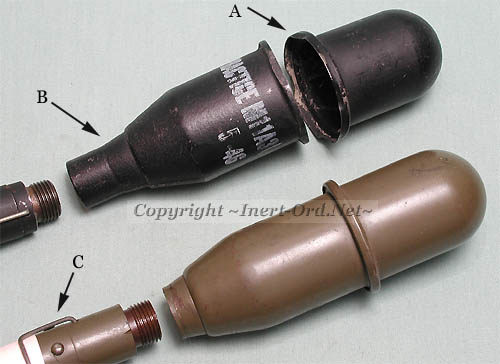
The M9A1 was a very successful design. While intended for anti-armor, it proved to be an effective antipersonnel weapon as well.
It is basically a scaled down version of the "bazooka" rocket, but of course with no rocket motor. When used in combination with the M1 Carbine, this made for an impressive weapon for its size.
The fuze is a simple impact type with a striker retained by a light creep spring and locked by a safety pin. As with its larger rocket propelled cousin, care had to be taken once the safety pin was withdrawn, as dropping it from shoulder level could detonated the grenade.
As with all H.E.A.T. munitions, the majority of the warhead is empty. The cone shape of the explosive delivers more destructive "focused" energy to the target than if the entire nose were filled to capacity.
For training purposes an empty inert round, the M11A series, was developed.
M11A1 - Made in two parts, the nose section and tail.
M11A2 - Consists of four sections, so that any one could be replaced if damaged: a sheet metal nose cone; cast iron body; tail boom; tail fins.
M11A3 and M11A4 - Simplified tail boom construction, eliminating the four rivets.
